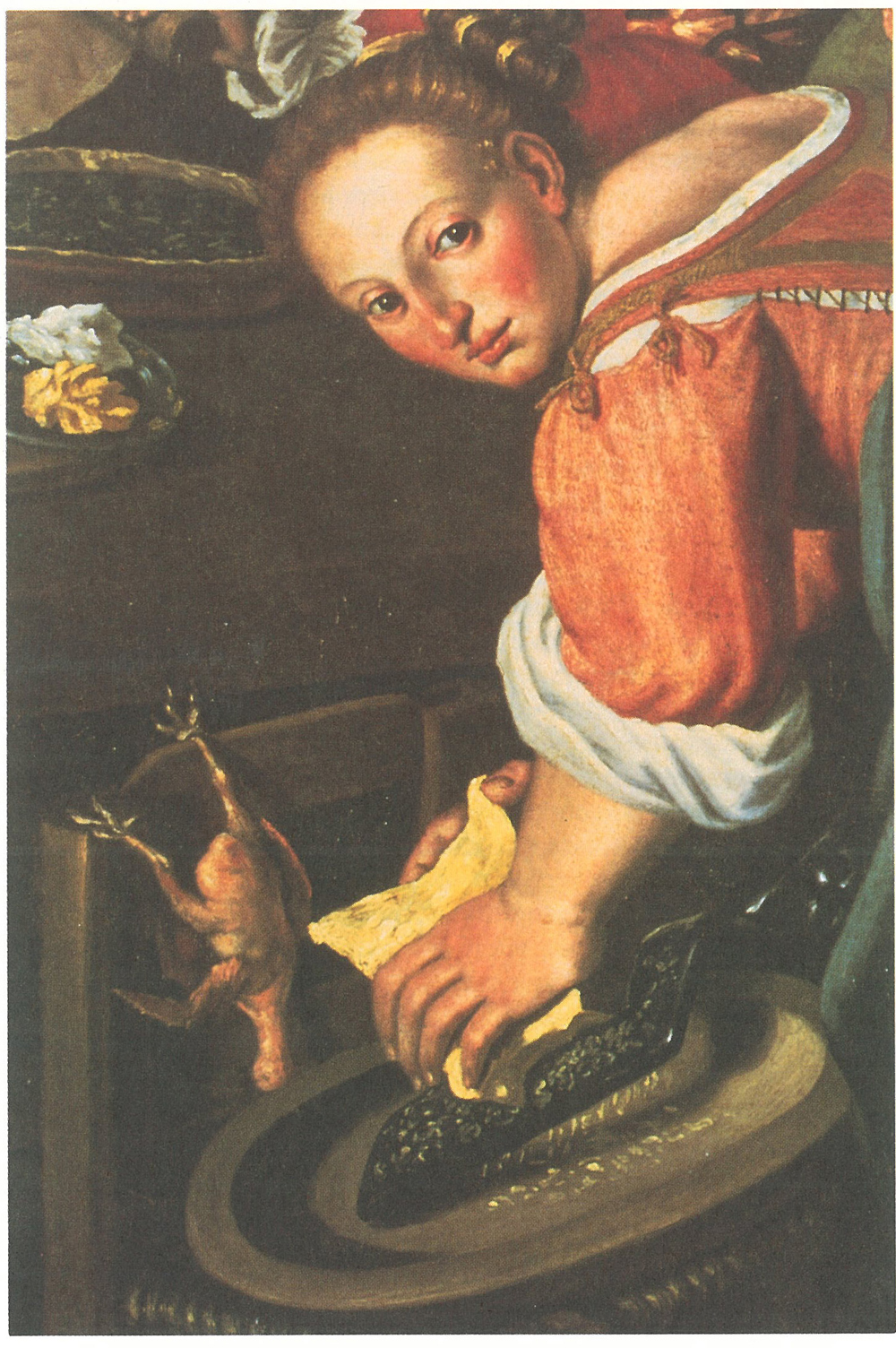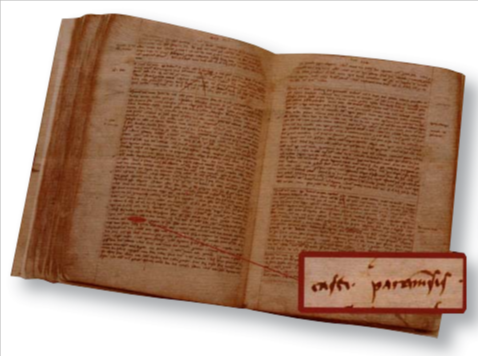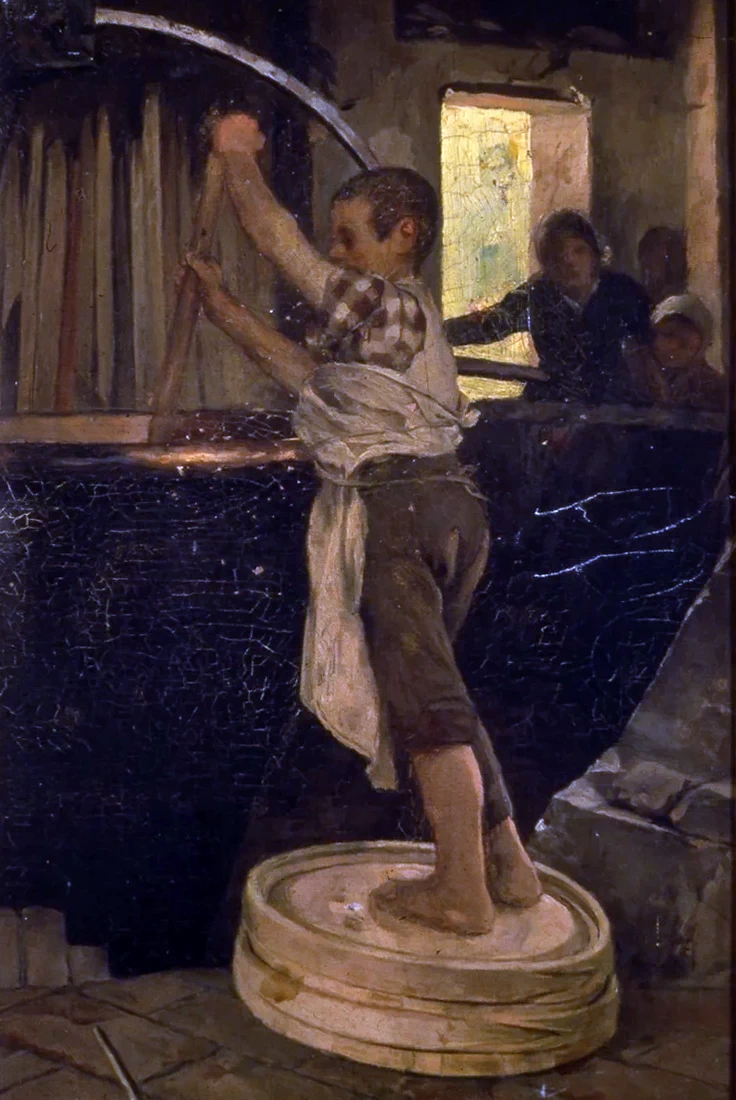Parmigiano Reggiano, like any traditional cheese, is much more than a series of reactions triggered by rennet, milk and salt: it is one of the symbols of Italian cuisine, the result of centuries of tradition, innovation and attention to taste. Its history originates in the territory of Emilia-Romagna and part of Lombardy and tells us of master cheesemakers, medieval monasteries and the need of a people.
Let’s find out together!
The Story
Origins in Benedictine Monasteries
The roots of Parmigiano Reggiano seem to go back to the 12th century, when Benedictine and Cistercian monks began producing it in monasteries between Parma and Reggio Emilia. The abundance of pastures and waterways encouraged the production of milk in large quantities, some of which was consumed fresh. And what was left over? It would have been sacrilege to throw it away, especially at a time when good and bad weather were capable of deciding abundance or scarcity of supplies and, literally, the survival of part of the population. The need to give surplus milk a longer life to avoid wasting it was the engine that started the search for ever more efficient dairy methods. Thus was born the ancestor of Parmigiano Reggiano: a hard, flavorful cheese suitable for aging.
The first document mentioning it dates back to 1254 and mentions it as “casei Parmensi“, cheese from Parma. The document is a notarial deed, in which a house is sold to an abbess, Isabella, of the monastery of San Pietro de Prata in the province of Genoa. In exchange, the abbess agrees to give each year six mines [Genoese measure, equivalent to about 87 kg] of wheat or corn and half a cantaro [circa 47 Kg] of Parmesan cheese (…).
At the time, Parma was the largest producer and the main marketplace for Parmigiano cheese wheels, which soon began to be exported to other Italian states and Europe. In the 15th century the largest dairy entrepreneur turned out to be the convent of San Giovanni, with four active dairies, but the most important noble families had also begun to invest in cheese production. They owned a stable with cows, to which the dairy was attached to make production more functional.
| Curiosity: legend has it that it was considered valuable to the point of being used as a bargaining chip in barters! Much more curious is to think that even as recently as 2009, Parmigiano Reggiano was valued as money … or rather as warranty. The bank Emilian Credit accepted Parmesan cheese as collateral for loans, helping finance cheese producers in northern Italy during the economic crisis. The two warehouses controlled by Credito Emiliano had about 440,000 wheels worth 132 million euros. |
The official name of Parmigiano is due to the intuition of the Duke of Parma Ranuccio I Farnese, and it was deposited on August 7, 1612 by the notary of the Ducal Chamber.

Crisis and revival
Over the next two centuries, as the economy declined, cheese production had a physiological decline, and Parmigiano was no exception.
In the late nineteenth century, amid Italy’s industrial and agricultural development, cheese production resumed strongly. In mountainous areas, however, production was still absent and would only begin in the early twentieth century thanks to more widespread communications and means of transportation. By now the product was known and appreciated in the major cities of Italy and abroad.
Cheese processing had reached a fairly good technical level in the nineteenth century, but the waste rate was still very high due to bacterial contamination that caused the cheeses to swell to internal cracks that made them effectively unserviceable-a breakthrough was needed!
The revolution would come in the early 20th century with the spread of steam heating, whey grafting, and the cage plug. In particular, whey grafting made it possible to solve the problem of contamination.
| What is whey graft? The residue from cheesemaking the day before, which is used to trigger the fermentation processes that give rise to cheese. It comes in handy because it already contains useful microorganisms that, when added to the milk and rennet, help clear away unwanted intruders. Sort of like what happens in yogurt: it is a controlled fermentation! |
Tradition today
Today, Parmigiano Reggiano is produced in the provinces of Parma, Reggio Emilia, Modena and parts of Bologna and Mantua. With more than 3,500 farms and 350 certified dairies, Parmigiano Reggiano is now a global benchmark. Every year, millions of wheels are exported all over the world, a symbol of Italian gastronomy.
The ingredients are very few, as with most cheeses: raw milk, rennet and salt. What is the secret of Parmigiano Reggiano? Romantically it is the experience of the master cheesemakers, rationally … following strict standards dictated by the Production Specification.
The process involves the use of copper boilers, the breaking up of the curd with a tool called a “spino,” and a long aging process that can exceed 36 months. There are wheels of Parmigiano that reach 56 months, releasing a unique concentrate of flavors. Each wheel is subjected to strict controls, and only those that conform can be branded with the Parmigiano Reggiano symbol. But we will talk more about the production process shortly.
When can a cheese be called Parmesan cheese?
The Protection Consortium and the PDO
In 1934 the Consorzio di Tutela was founded, a key organization to protect the name and quality of Parmigiano Reggiano from its many imitations. Thanks to the Consortium, the cheese was granted Protected Designation of Origin (PDO) status at the European level in 1996.
The Production Regulations of Parmigiano Reggiano. is the official document that defines the rules and standards for its production. It establishes requirements regarding the geographical area of production, characteristics of the milk used, processing techniques, aging times and other aspects to ensure the quality and authenticity of Parmigiano Reggiano.
The specification for Parmigiano Reggiano is available on the Consortium’s official website, in the regulations section.
But in a nutshell.
How is Parmigiano Reggiano made?
Parmigiano Reggiano is produced by following a traditional process, which, as we have seen, is now protected by production specifications.
The following is a summary of the main processing steps:
1. Milk Collection.
Origin: Milk comes from cows fed hay and grass grown in the production area, without the use of silage.
Two milkings: raw milk from the evening milking, left to rest in tanks to allow the cream to rise, and milk from the morning milking is used.
2. Blending and Coagulation
Evening skim milk is mixed with morning whole milk in large copper inverted bell-shaped cauldrons. Graft whey, rich in starter cultures from the previous day’s processing, and calf rennet are added .
The mixture is heated to about 33-35°C to allow coagulation.
3. Rupture of the Curd
The “spino,” a traditional wooden or steel tool, is used to break the curd into granules that are similar in size to grains of rice. The mass is then heated to about 55°C to allow the granules to aggregate and expel the whey, Milky liquid composed mainly of water and lactose, contains some serum protein, fat vitamins and mineral salts.
4. Dough Extraction and Pressing
The cheese mass settles to the bottom of the boiler. It is collected with a cloth and divided into twin wheels, which will become two wheels of Parmigiano Reggiano. The wheels are wrapped in cloth and placed in wooden or plastic molds to remove the residual whey. During this stage, the cheese is given its characteristic rounded profile.
5. Salting
The wheels are immersed in tanks of brine saturated with water and salt for about 20-25 days. This step serves to flavor and preserve the cheese.
6. Seasoning
Parmigiano Reggiano wheels are transferred to warehouses with wooden shelves, which we are used to seeing in reports and documentaries, where they are turned and cleaned regularly. The minimum aging period is 12 months, but the cheese can mature for up to 24, 36 months or more, developing complex aromas and a grainy texture to flakes . After 12 months, each wheel is examined with a hammer for internal consistency. Only those that pass the checks obtain the Parmigiano Reggiano Consortium’s firebrand mark certifying them as Parmigiano Reggiano DOP. Molds that do not meet the standards can be ” decertified” and marketed under different names.
Curiosity!
- Literary Notes: In 1344, Giovanni Boccaccio mentions Parmigiano in the Decameron, describing an imaginary country where it was grated over noodles.
- London market: In the 18th century, Parmesan was one of the most expensive cheeses in European markets, in demand even by British royalty.
- A treasure in war: During World War II, Parmesan cheese wheels were hidden in shelters to prevent them from being looted
- Weight: Each wheel weighs about 40 kg and requires about 550 liters of milk for production.
Parmigiano Reggiano is not just a food; it is culture, tradition and passion. Each flake tells a story of authenticity and commitment, making it not only a pleasure for the palate, but also a piece of history to be enjoyed.













